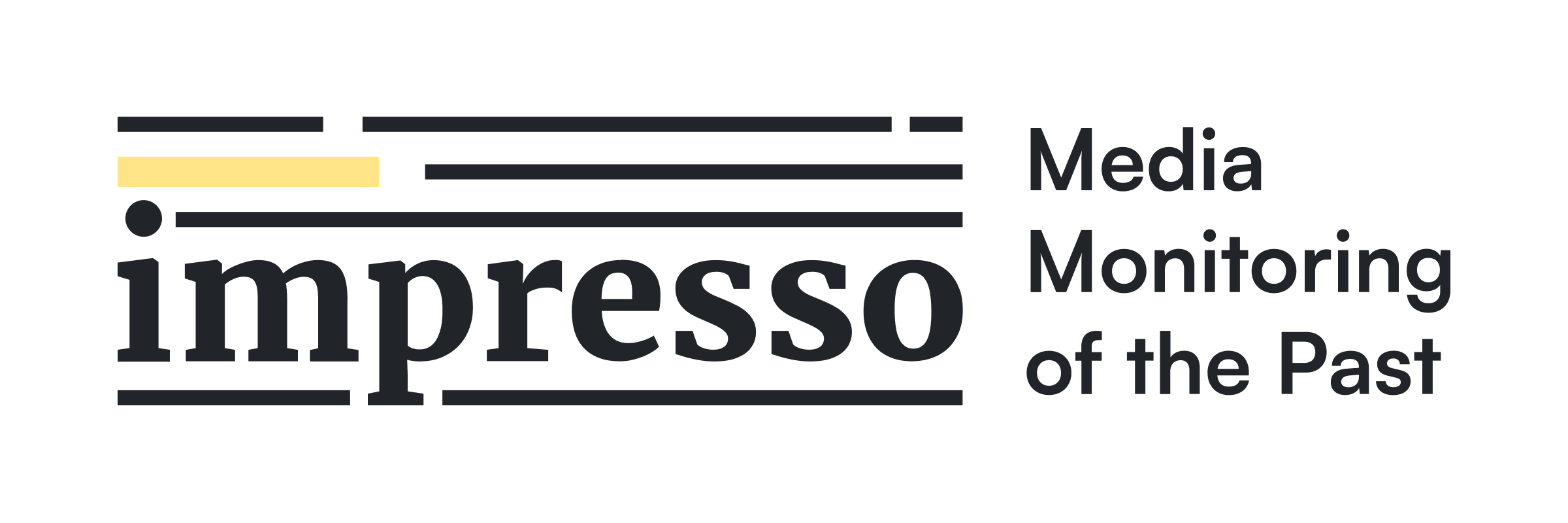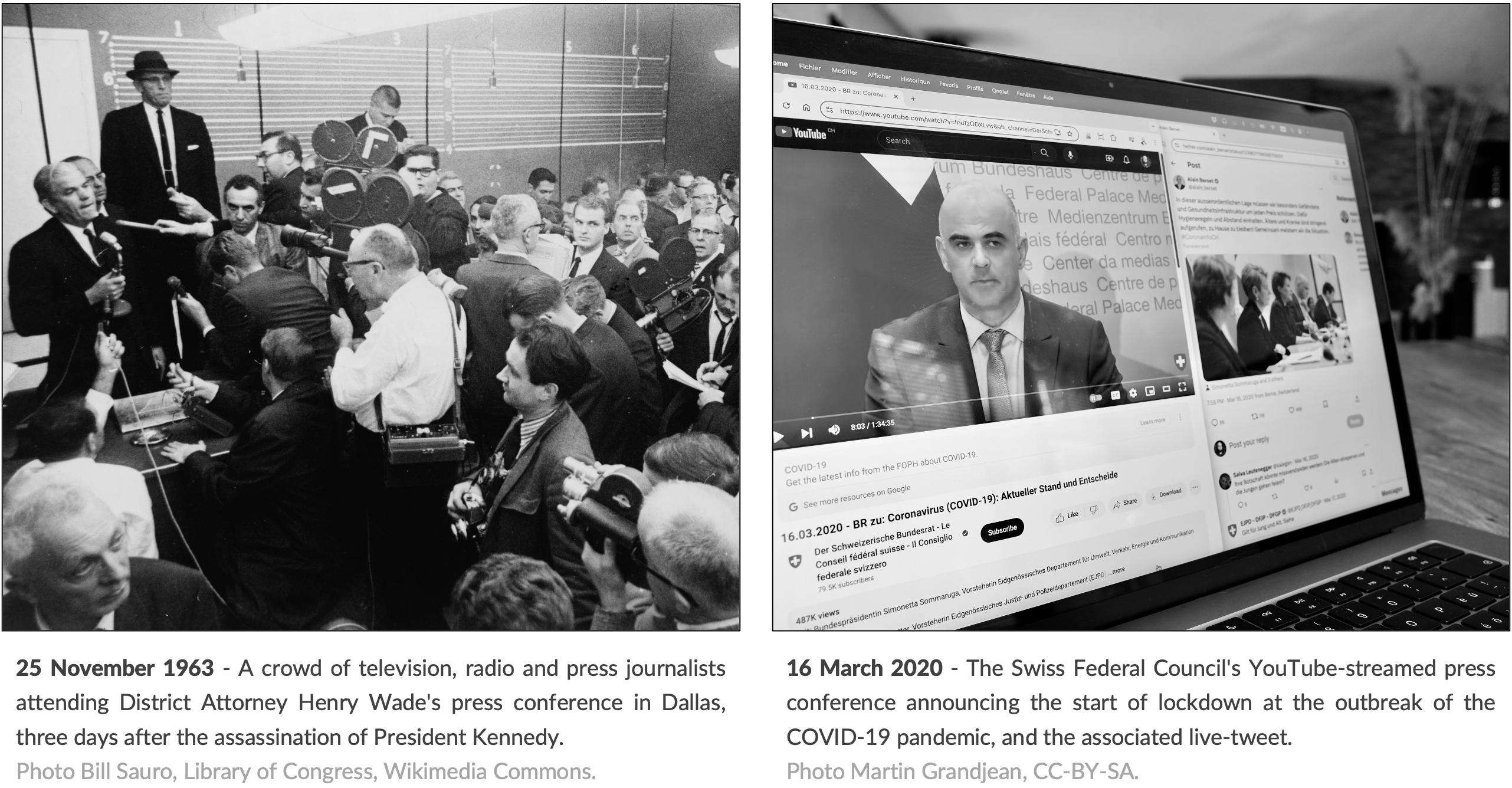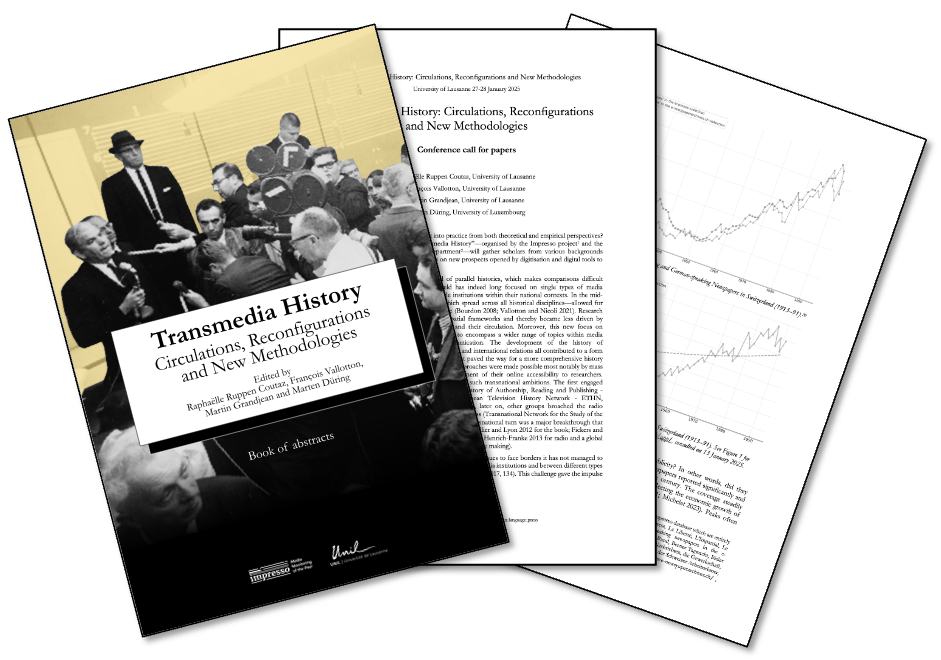Transmedia History: Circulations, Reconfigurations and New Methodologies
 27-28 January 2025
27-28 January 2025
International conference
University of Lausanne, Nucleo (Vortex building)

About
Book of abstracts

📖 Ruppen Coutaz Raphaëlle, Vallotton François, Grandjean Martin and Düring Marten (eds). Transmedia History: Circulations, Reconfigurations and New Methodologies, Lausanne, 2025, 109 p. [DOI 10.5281/zenodo.15052470]
Papers
INTRODUCTION
📄 Transmedia History: Circulations, Reconfigurations and New Methodologies - Raphaëlle Ruppen Coutaz, François Vallotton and Martin Grandjean (University of Lausanne) [DOI 10.5281/zenodo.15045815]
TRANSMEDIATIC ACTORS, NETWORKS AND PRACTICES
📄 “No Wall is Thick Enough to Stop Them” - Transmediality and Colonial-Critical Resistance in French West Africa 1900 - 1914 - Philipp Horn (University of Bern) [DOI 10.5281/zenodo.15045894]
📄 Geneva’s Press and Radio Microcosm and the League of Nations in the Interwar Period - Martin Grandjean (University of Lausanne) [DOI 10.5281/zenodo.15045946]
📄 Cross Media History in the mid-20th Century: The American Foreign Correspondents, the Rise of National Socialism, and the Convergence of Print and Radio Reporting - Norman Domeier (Charles University Prague) [DOI 10.5281/zenodo.15046791]
📄 La diffusion du rock en France : approche transmédiatique (années 1960 - années 1970) - Maxime Guebey (Université de Tours) [DOI 10.5281/zenodo.15046814]
ARCHAEOLOGIES, RECONFIGURATIONS AND NEW GENEALOGIES
📄 Animation as a Transmedia Catalyst - Antoine Rigaud (Université Paris Nanterre) [DOI 10.5281/zenodo.15046826]
📄 “CD-ROMS in Print”: Transmediality in Early Digital Culture - Alina Volynskaya and Valérie Schafer (University of Luxembourg) [DOI 10.5281/zenodo.15046840]
📄 The Fax and Teletext. Imagining the Future in the 1980s and 1990s - Jesper Verhoef (University of Groningen) [DOI 10.5281/zenodo.15046854]
CIRCULATIONS, ADAPTATIONS AND RECIPROCAL INFLUENCES
📄 Digital Throws of the Dice: A Genealogy of Rhetoric in Fallout - Clay Foye (EPFL) [DOI 10.5281/zenodo.15046860]
📄 Résistance des écosystèmes médiatiques et obsolescence programmée : le cas Dragon Ball (Japon, France, États-Unis) - Bounthavy Suvilay (Université de Lille) [DOI 10.5281/zenodo.15046886]
📄 Des serveurs BBS à la TSR : l’histoire transmédiatique de “Star Stormer” (1991) - Pierre-Yves Hurel and Guillaume Guenat (University of Lausanne) [DOI 10.5281/zenodo.15046898]
📄 Les nouveaux modes de production et de circulation de l’«actualité littéraire». La presse littéraire européenne francophone à l’épreuve du numérique - Léa Kœnig (EHESS) [DOI 10.5281/zenodo.15046916]
TRANSMEDIA MOBILIZATIONS AND PROPAGANDA
📄 Transmediality and Colonial Diplomacy: The Berlin Conference (1884-1885) Through Diplomatic Correspondence, “Livre Jaunes” and the French Press - Ferdaous Affan (University of Luxembourg) [DOI 10.5281/zenodo.15046928]
📄 Faire une histoire visuelle et médiatique du tourisme, un enjeu transmédiatique : l’exemple de la Tchécoslovaquie en contexte de guerre froide - Marie Blanc (Université Grenoble Alpes) [DOI 10.5281/zenodo.15046934]
📄 The Transmedia Publicity of Swiss Banks: Public Relations Strategies and Mass-Media Coverage (1960-1977) - Arthur Michelet (University of Lausanne) [DOI 10.5281/zenodo.15046946]
📄 The Intellectual Life that Oil Fostered: Exploring the History of a ‘Media Ecosystem’ in Latin America (1950-1980) - Juan-David Murillo (Instituto Caro y Cuervo) [DOI 10.5281/zenodo.15046954]
CHALLENGES AND OPPORTUNITIES OF THE TRANSMEDIA APPROACH
📄 Research Data Infrastructures Before They Were Cool: Microfilms, Photocopies and Early Digital Storage Devices in Humanities Scholarship (1950-1990) - Anna-Maria Sichani (University of London) [DOI 10.5281/zenodo.15046967]
📄 Just to be Safe. Towards a Frame Analysis of 70 years of Global Debate on the Civil Usage of Nuclear Power Between Science, Activists and Newspapers - Marten Düring (University of Luxembourg) and Kaspar Beelen (University of London) [DOI 10.5281/zenodo.15046979]
📄 A Transmedia History Approach to Studying the Cultural Politics of Software Interfaces, 1977-1995 - Patryk Wasiak (Polish Academy of Sciences) [DOI 10.5281/zenodo.15046990]
📄 From Oral History to Metadata? Report from the Oral History of Radio Archivists (OHRA) Pilot Project - Carolyn Birdsall (University of Amsterdam) and Marten Düring (University of Luxembourg) [DOI 10.5281/zenodo.15046998]
📄 Archiving Multiplatform Conspiracy Social Spaces: A Case Study of the QAnon Counter-Public - Dusan Bozalka (University Paris-Panthéon-Assas) [DOI 10.5281/zenodo.15047007]